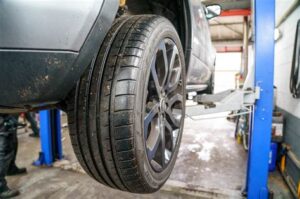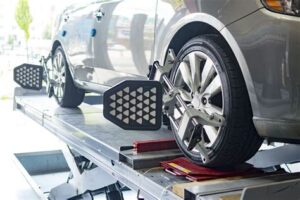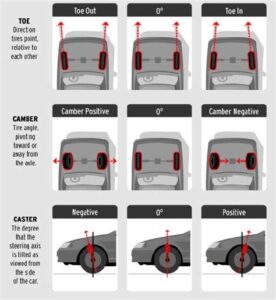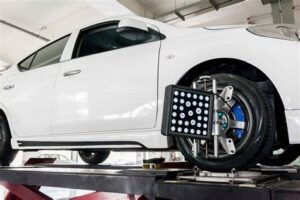In the world of car audio, achieving the perfect sound can often feel elusive. Enter time alignment, a game-changing feature that fine-tunes your audio experience by ensuring that sound waves reach your ears at the right moment. This innovative technology not only enhances sound quality but also transforms your vehicle into a listening sanctuary. In this article, we will explore the fundamentals of time alignment, understand its significance in elevating sound performance, and guide you on how to implement it effectively in your car audio system. Along the way, we’ll address common pitfalls and share the remarkable results you can expect from a well-aligned setup. If you’re ready to unlock the full potential of your car audio experience, read on!
Understanding Time Alignment For Superior Car Audio Performance
Time alignment in car audio refers to the process of synchronizing the sound from various speakers to ensure that all audio signals reach the listener at the same time. This adjustment is crucial for creating an immersive and balanced listening experience, particularly when different speakers are installed at various locations within the vehicle. When sound waves emanate from different points and arrive at the listener’s ears at different times, it can lead to phase issues, causing a muddied sound and a lack of clarity.
The concept of time alignment relies on the principle that sound travels in waves, and the distance from each speaker to the listener affects when those waves arrive. For instance, if the front speakers are closer to the driver than the rear speakers, the sound from the front speakers will reach the driver sooner. This discrepancy can result in the brain perceiving the audio as out of sync, which detracts from the overall sound quality.
To achieve optimal sound staging, it is essential to adjust the audio settings so that each speaker’s output is timed perfectly. This can often be accomplished through digital signal processing (DSP), allowing for individual speaker adjustment in terms of delay and volume levels. Here’s a basic overview of how to implement time alignment in your car audio system:
| Step | Description |
|---|---|
| 1 | Measure distances from each speaker to the primary listening position. |
| 2 | Calculate delay time needed for each speaker based on the distances measured. |
| 3 | Use DSP settings to adjust the delay for each speaker accordingly. |
| 4 | Test the sound and make fine-tuning adjustments as necessary. |
Employing time alignment techniques can significantly enhance your car audio system’s performance, delivering clearer highs, enhanced lows, and a much more enjoyable listening experience. By focusing on this aspect of sound tuning, audio enthusiasts can unlock the full potential of their audio setups.
The Importance Of Time Alignment In Sound Quality Enhancement
When it comes to enhancing the overall sound quality of your car audio system, time alignment plays a crucial role. The primary aim of time alignment is to ensure that all audio signals reach the listener’s ears at the same time. This synchronization allows for a more cohesive soundstage, where different frequencies blend seamlessly, resulting in a more enjoyable listening experience.
One of the main benefits of implementing time alignment is the improvement in clarity and detail of the sound. With properly aligned speakers, you can experience a more accurate reproduction of music, vocals, and instruments. This leads to a more immersive experience where you can distinguish individual musical elements, even at higher volumes.
Furthermore, time alignment helps in creating a sense of depth and space in the audio. By adjusting the timing of when sound from each speaker reaches the listener, you can achieve a three-dimensional audio effect that enhances the overall sonic experience. The result is a more natural and realistic sound that can transport you into the music.
| Benefits of Time Alignment | Effects on Sound Quality |
|---|---|
| Improved Clarity | Higher distinction of sounds in the mix |
| Enhanced Soundstage | More immersive listening experience |
| Greater Depth | Three-dimensional audio effect |
| Smoother Frequencies | Natural sound reproduction |
The importance of time alignment in sound quality enhancement cannot be overstated. By ensuring that all audio signals are synchronized, you can achieve a richer, more detailed, and immersive sound experience in your vehicle, making every journey more enjoyable.
How To Achieve Effective Time Alignment In Your Car Audio System
Achieving effective time alignment in your car audio system can significantly enhance the listening experience. Here are several steps to ensure that your audio setup is properly aligned:
- Understand Your Speakers’ Position: The first step in time alignment is to assess the placement of your speakers. The distance from the speakers to the listener’s ears can vary greatly, affecting the sound perception. Positioning is crucial, as every speaker should be equally distant from the listener’s ears for optimal sound.
- Use Digital Signal Processing (DSP): Investing in a DSP can help you fine-tune your audio system. Many DSP units offer features that allow you to adjust the delay for each speaker based on its distance from the listening position. This ensures that sound waves from all speakers reach the listener at the same time, enhancing coherence.
- Calibrate Speaker Levels: After setting your speakers and installing your DSP, the next step involves calibrating the level or volume for each speaker. Use a sound meter to measure levels at the listening position, ensuring consistency across all speakers. This helps maintain a balanced soundstage when moving through different audio tracks.
- Conduct Listening Tests: Once the setup is complete, carry out listening tests with various audio tracks to evaluate the effectiveness of your time alignment. Pay attention to how well the sound integrates across channels and tweak the settings as necessary.
- Use Testing Software: For those who are keen to achieve precise time alignment, utilizing acoustic measurement software can provide in-depth insights. Tools like REW (Room EQ Wizard) can help analyze the sound output and suggest further adjustments.
By following these steps diligently, you can enhance your car audio system’s performance, ensuring a remarkable listening experience characterized by clarity and depth.
Common Mistakes When Implementing Time Alignment In Car Audio
Achieving the optimal time alignment in your car audio system can greatly enhance your overall listening experience. However, many enthusiasts make common mistakes during this process that can lead to subpar results. Here are some of the pitfalls to watch out for:
- Ignoring Speaker Location: One of the biggest errors is not considering the physical placement of your speakers. Each speaker produces sound that travels at different distances to your ears, and if these distances are not properly adjusted, the resulting sound can be muddled.
- Neglecting the Listening Position: Not accounting for the driver’s position can result in imbalanced sound. Make sure your time alignment settings are tailored to your primary listening spot, ensuring you receive the best audio experience.
- Overly Complicated Setups: Sometimes, enthusiasts try to adjust too many parameters at once, which can lead to confusion and a loss of quality. It’s best to start with basic adjustments and progressively refine your system.
- Inadequate Use of Equipment: Many forget to leverage the full capability of their audio equipment. Using an advanced digital signal processor (DSP) can make a significant difference in achieving precise time alignment.
- Skipping Calibration: Failing to calibrate your settings after implementing time alignment can lead to imprecise sound reproduction. Always take the time to double-check and adjust your configuration.
By being aware of these common mistakes, you can successfully implement time alignment in your car audio system, resulting in a clearer and more dynamic sound experience.
Results You Can Expect From Proper Time Alignment Setup
When you implement time alignment in your car audio system correctly, the results can be transformative. Below are some of the key outcomes you can expect:
Investing time and effort into the proper setup of time alignment can lead to a significant enhancement in your car audio experience, making each drive more enjoyable.
Frequently Asked Questions
What is time alignment in car audio?
Time alignment in car audio refers to the adjustment of the timing of sound signals so that they reach the listener’s ears simultaneously, improving the overall soundstage and clarity.
Why is time alignment important in car audio systems?
Time alignment is important because it helps to create a more cohesive sound experience, where audio sources (like speakers) are synchronized, allowing for clearer vocals and better imaging.
How can I achieve time alignment in my car audio system?
You can achieve time alignment by using digital signal processors (DSPs) that allow you to delay audio signals from different speakers, typically through software settings.
What tools or equipment do I need for time alignment?
You’ll need a digital signal processor (DSP), a measurement microphone, and audio analysis software to properly measure and adjust the timing of your speakers.
Can time alignment improve the sound quality of factory-installed audio systems?
Yes, time alignment can significantly improve the sound quality of factory-installed audio systems, making the music sound more balanced and realistic, even without premium upgrades.
Are there any drawbacks to time alignment setups?
One potential drawback is the complexity of setup and tuning, which may require some technical knowledge and can be time-consuming.
Is time alignment worth the investment in a car audio system?
Yes, if you’re an audiophile or someone who appreciates high-quality sound, investing in time alignment can greatly enhance your listening experience and make your car audio system more enjoyable.





